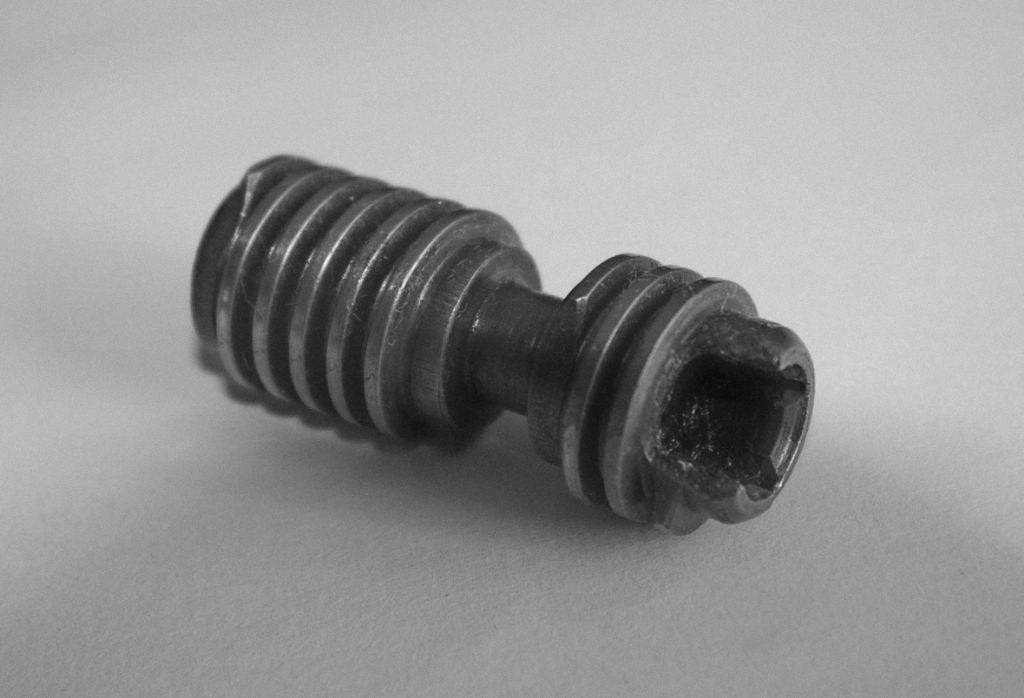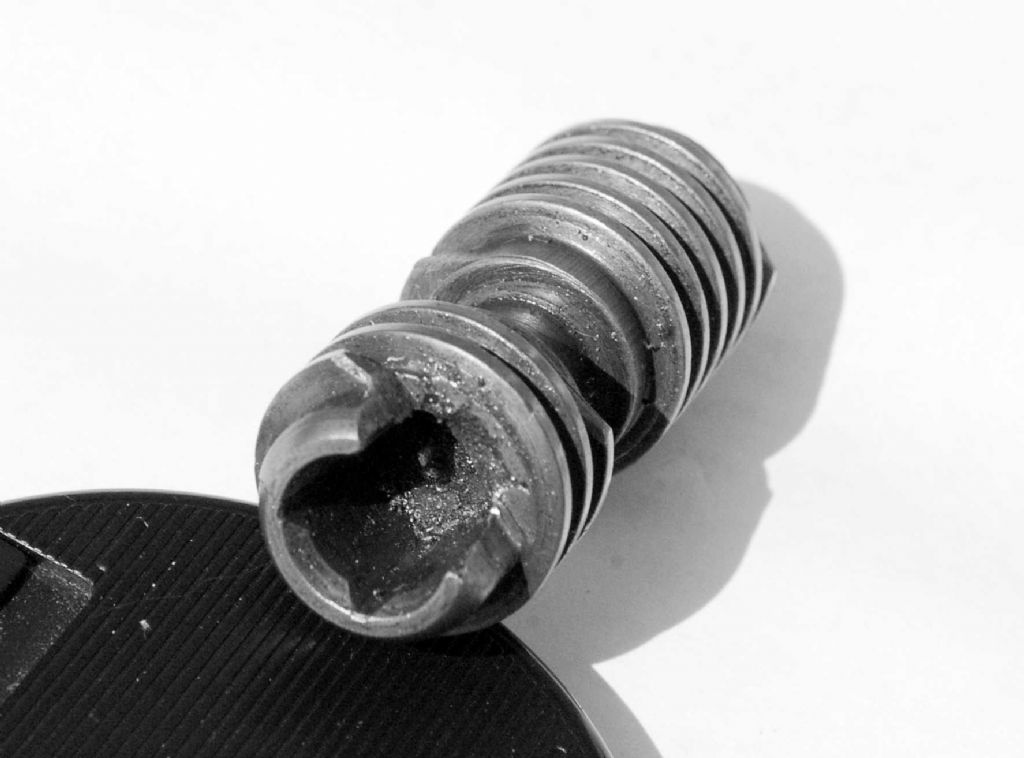As in repair the original square socket, you mean? That might work on two of them, but the third one is way worse – it’s broken out on two sides, not just one. The other thing that’s not visible from either photo is that this one is starting to crack in another corner, as well. Which will make it as bad as number three in no time…
The thing I’ve now realised is probably how they make these. You drill a hole, and notch the corners with something rather powerful – which makes me think that perhaps the manufacturing process leaves the material with four relatively weak spots. The wall thickness in the corners is only about 2/3 of the side thickness around the rest of the socket head, after all.
But I’m bearing all these suggestions in mind, certainly. Fortunately there is absolutely no rush to fix these screws, as presently it’s a spare chuck anyway. If I can get it sorted one day, it will most likely get used on a rotab, and not for higher-speed turning as such.
Any more suggestions or comments are welcome – I still haven’t got the best solution sorted in my mind yet.
Edited By Steve Garnett on 21/04/2011 15:22:46
JOHN BRIDGE 1.






